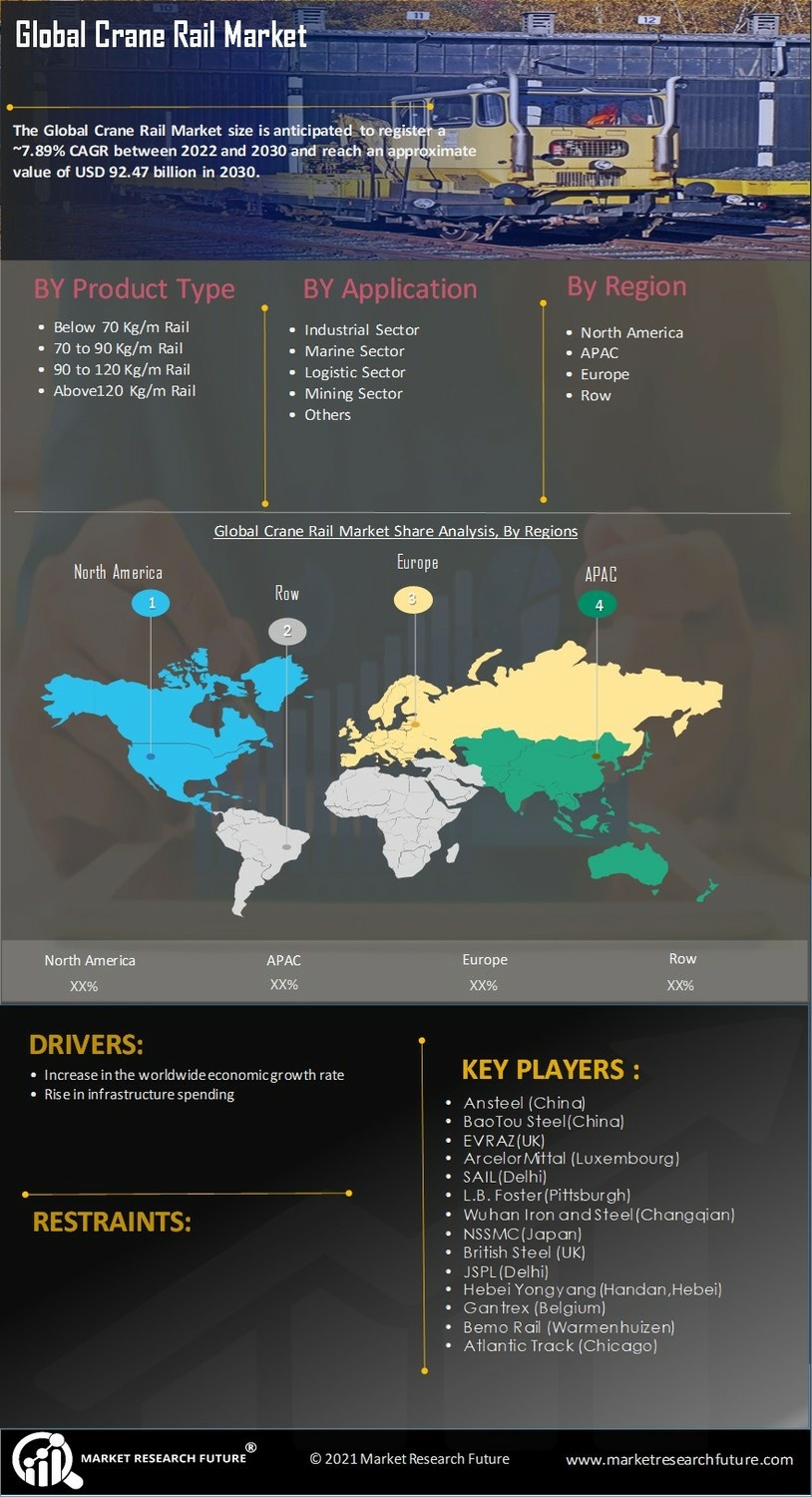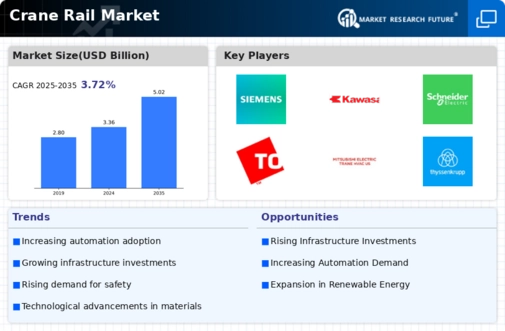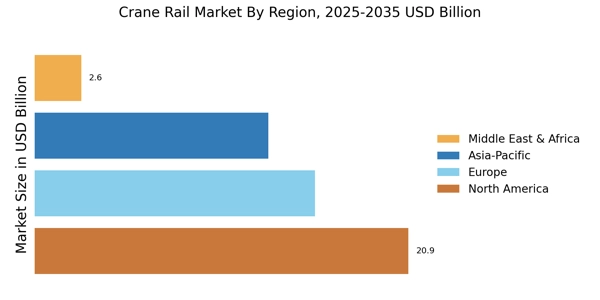Increased Demand for Automation
The Crane Rail Market is experiencing a notable surge in demand for automation across various sectors, including manufacturing and logistics. As industries strive for enhanced efficiency and productivity, the integration of automated systems necessitates robust crane rail solutions. According to recent data, the automation market is projected to grow significantly, with investments in automated material handling systems expected to reach substantial figures. This trend indicates a shift towards more sophisticated crane rail systems that can support automated operations, thereby driving growth in the Crane Rail Market. Furthermore, the need for precision and reliability in automated processes underscores the importance of high-quality crane rail infrastructure, which is likely to become a focal point for manufacturers and suppliers in the industry.
Infrastructure Development Projects
The Crane Rail Market is significantly influenced by ongoing infrastructure development projects worldwide. Governments and private entities are investing heavily in transportation and industrial infrastructure, which includes the construction of railways, ports, and manufacturing facilities. These projects often require the installation of crane rail systems to support heavy lifting and material handling operations. Data suggests that infrastructure spending is projected to increase, driven by urbanization and the need for modernized facilities. This trend presents a substantial opportunity for the Crane Rail Market, as the demand for durable and efficient crane rail solutions is likely to rise in tandem with these development initiatives.
Expansion of E-commerce and Logistics
The Crane Rail Market is poised for growth due to the rapid expansion of e-commerce and logistics sectors. As online shopping continues to gain traction, the demand for efficient warehousing and distribution centers is increasing. This trend necessitates the installation of advanced crane rail systems to facilitate the movement of goods within these facilities. Recent statistics indicate that the logistics sector is expected to witness a compound annual growth rate that could exceed industry averages. Consequently, the Crane Rail Market is likely to benefit from this expansion, as companies seek to optimize their operations and improve supply chain efficiency through the implementation of state-of-the-art crane rail solutions.
Rising Safety Standards and Regulations
The Crane Rail Market is also shaped by the rising safety standards and regulations imposed by various governing bodies. As industries prioritize worker safety and operational reliability, compliance with stringent safety regulations becomes paramount. This trend necessitates the adoption of high-quality crane rail systems that meet or exceed safety standards. Recent regulatory changes indicate a shift towards more rigorous safety protocols, which could compel companies to upgrade their existing crane rail infrastructure. Consequently, the Crane Rail Market is likely to see increased demand for safety-compliant crane rail solutions, as businesses strive to mitigate risks and enhance workplace safety.
Technological Innovations in Crane Rail Systems
The Crane Rail Market is witnessing a wave of technological innovations that enhance the performance and safety of crane rail systems. Advancements in materials science and engineering are leading to the development of stronger, lighter, and more durable crane rails. Additionally, the integration of smart technologies, such as IoT and predictive maintenance, is transforming how crane rail systems operate. These innovations not only improve operational efficiency but also reduce downtime and maintenance costs. As industries increasingly adopt these advanced solutions, the Crane Rail Market is expected to experience growth driven by the demand for cutting-edge crane rail technologies that meet modern operational requirements.


















Leave a Comment